Fat Side Up or Down: The Best Way To Cook Perfect Brisket
Sep 06, 2023 By Fabian Forte
Advertisement
For barbecue lovers, smoking a perfect brisket is a badge of honor. When it comes to preparing this tough but flavorful cut of beef, everything matters the rub, the wood, the temperature, and the cooking time. But no question sparks more debate than whether to place the brisket fat side up or fat side down on the smoker.
Both methods have staunch defenders, each claiming their way produces the most tender, juicy, and smoked meat. So which is right? Should the layer of fat on a brisket face towards the heat source or away from it?
In this article, we will delve into the pros and cons of cooking brisket fat side up versus fat side down. Let's settle this beef once and for all!
What Is Brisket Fat Cap?
A brisket is a cut of beef from the chest of the cow. When prepared for cooking, brisket will have a thick fatty layer on one side called the “fat cap.” This cap is part of the natural marbling of brisket and helps keep the meat moist and flavorful when cooked.
The fat cap comprises subcutaneous fat that surrounds the muscle and is present on the skin side. It develops as the cow matures and deposits adipose tissue.
A brisket's fat cap is usually around 1/4 to 1/2 inch thick. Some trim it down before cooking, but most experts recommend leaving it intact. The fat cap helps protect the leaner meat from drying out. It also allows you to cook the brisket fat side up so the rendering fat can continuously baste the meat.
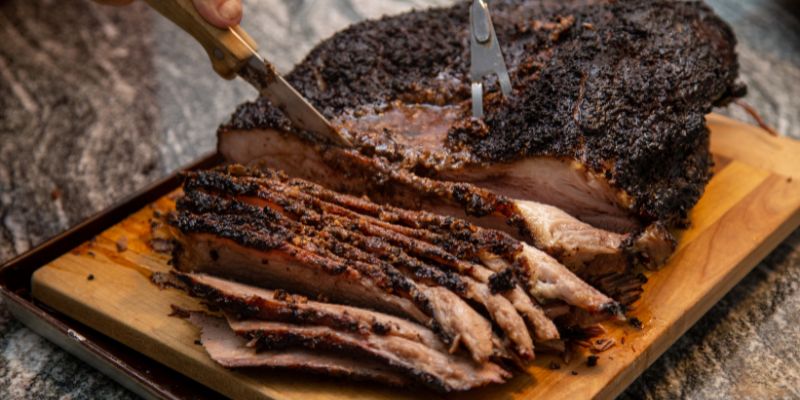
Should You Remove The Brisket Cap?
While some argue trimming a brisket's fat cap enables better rub and smoke penetration, most experts recommend keeping it intact. The fat cap bastes the meat as it cooks, producing a juicier, more tender brisket.
Removing too much fat risks drying out the meat during the long smoking process. There are cases where excessive fat could make the brisket overly greasy, warranting trimming some of the fat cap.
But brisket generally benefits from the moisture and flavor the fat provides when left on. Your best bet is cooking the brisket with the fat cap remaining to promote tenderness.
Pros And Cons Of Cooking The Brisket Side Up
Pros
- The rendering fat bastes the meat and keeps it moist as it cooks. This produces very tender brisket.
- The fat cap exposed to heat and smoke produces a nice smoke ring.
- It's easy to monitor doneness based on the fat rendering - you can tell when it's ready by how much fat has broken down.
Cons
- The fat cap can be a barrier, preventing smoke and seasoning from fully penetrating the meat.
- Since the fat is on top, the bottom of the brisket doesn't get quite as exposed to smoke, reducing the smoky flavor.
- Letting too much fat render and pool in spots can lead to patches of soggy bark rather than a nice crispy crust.
Pros And Cons Of Cooking The Brisket Side Down
Pros
- Allows smoke and seasoning to penetrate the meat on top, leading to superior bark formation. The spiced crust develops more flavor without the fat cap barrier.
- It prevents the bottom of the brisket from getting overly moist and soft during the long cooking time. The fat cap provides insulation so the underside doesn't braise.
- Many respected pitmasters and BBQ experts recommend fat side down as the ideal brisket cooking method. The cited reasons are better moisture drainage, smoke exposure, and ease of slicing.
Cons
- The brisket is prone to drying out over the long smoke without the fat cap basting the top as it renders. Moisture needs to be actively added.
- It is harder to gauge doneness accurately and precisely when to pull the brisket off the grill/smoker—less visual fat rendering cues.
Should You Switch Sides While Cooking Brisket Cap?
Switching the smoking brisket fat side up or down during cooking can help achieve both up and down benefits, but it also comes with some risks. Carefully flipping a brisket mid-cook evens out moisture and smoke exposure.
However, opening the smoker frequently interrupts cooking and makes monitoring temperature trickier. Most experts advise picking a fat side and sticking to it for simplicity and moisture retention.
Rotating the fat side up or down for long cooks has some merits, but handle brisket gently to avoid heat loss or damaging meat. Periodic flipping is optional for experienced pitmasters, but leaving the fat cap in place tends to yield the best results for most.
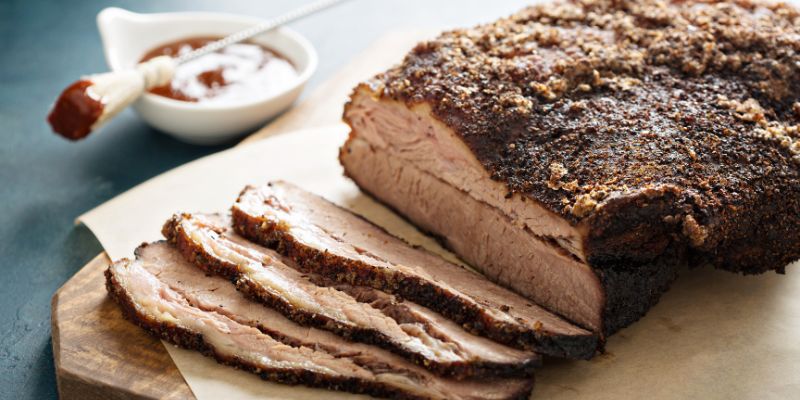
Tips For Cooking Brisket
Here are some tips for cooking brisket:
- Cook to an internal temperature of 203°F - 205°F for tender, fall-apart brisket. Plan for 1-2 hours of cooking time per pound.
- If cooking fat side down, use a water pan and wrap in butcher paper or foil at the stall (around 160°F) to help retain moisture.
- Keep the surface moist by mopping or spritzing with a 50/50 mix of broth and Worcestershire sauce every 45-60 minutes. This adds flavor while preventing drying.
- Let the brisket rest wrapped in a cooler for 1-2 hours before slicing to allow juices to absorb back into the meat.
- Use a razor-sharp knife to thinly slice across the grain. Cut against the grain of the meat fibers.
- Apply rubs with spices like salt, pepper, garlic, and paprika to form a nice bark.
- Use wood like oak, hickory, or pecan for optimal smoked brisket flavor.
- Monitor temperature closely and adjust venting as needed to maintain steady low heat.
Final Words
When it comes to brisket, a few factors provoke more passionate debate about smoking brisket fat side up or down. Both fat up and fat down proponents make convincing cases. Cooks aiming for moist meat swear by basting through rendering fat, while others chasing the perfect bark favor smoke exposure.
Ultimately, the ideal method comes down to individual preferences and priorities. For most, cooking fat side up provides hard-to-replicate moisture and tenderness. But with some care, the fat side down can produce exemplary smoked brisket.
Understanding how each method affects your brisket lets you determine the best option for your goals and style.
Advertisement
-
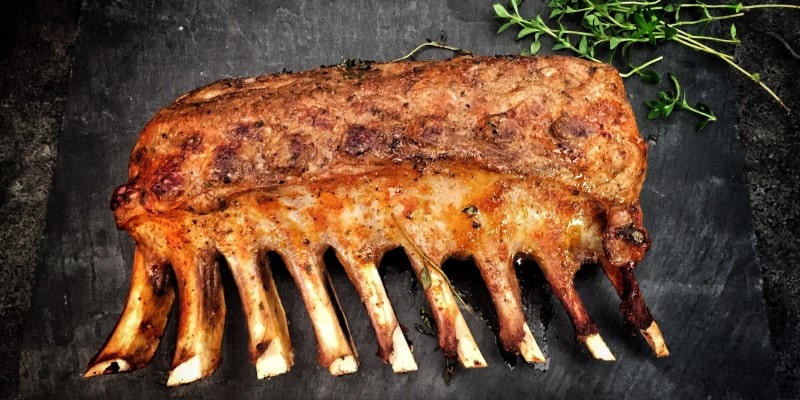 Sep 04, 2023
Sep 04, 2023Mochi is the Secret Ingredient Your BBQ Needs to be Next Level
Unleash the magic of Mochi BBQ and elevate your grilling game with this unique and chewy rice cake.
-
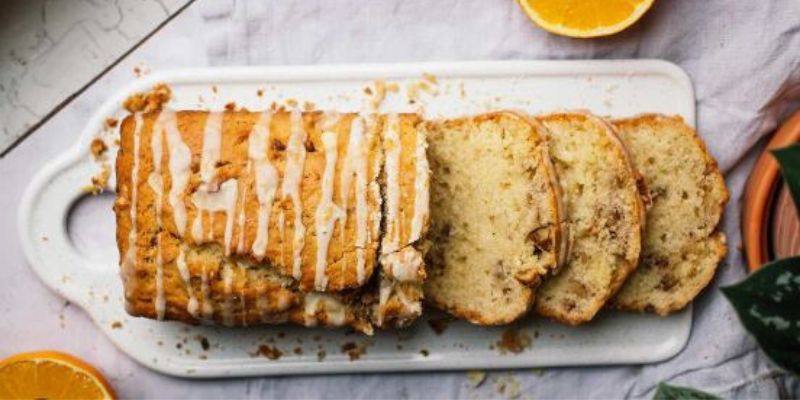 Sep 06, 2023
Sep 06, 2023Everything you Need to know about Vegan Orange Olive Oil Cake
Discover the zesty delight of a vegan orange olive oil cake. Indulge in a citrus-infused, dairy-free dessert with plant-based ingredients that's both flavorful and ethical
-
 Sep 16, 2023
Sep 16, 2023Does Asparagus Make Pee Smell Weird? The Science Behind Asparagus Pee
Do you want to learn why asparagus makes your pee smell weird, how it affects different people, and what you can do about it. This article outlines the facts!
-
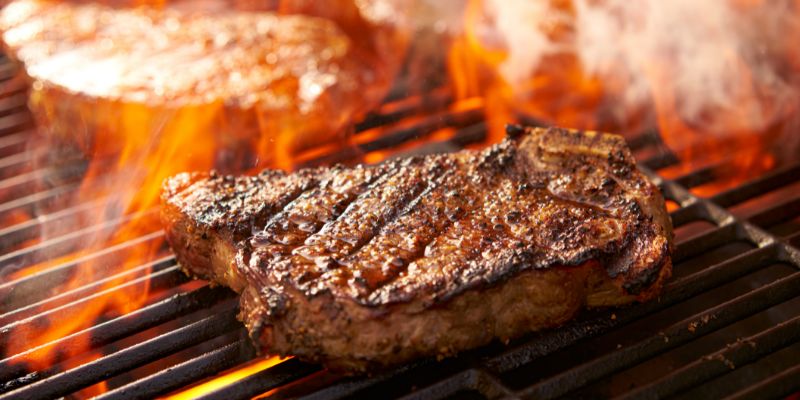 Sep 06, 2023
Sep 06, 2023How To Grill Frozen Steak For Juicy Tender Results
Learn how to season, sear, and finish frozen steaks on the grill for optimal doneness and flavor using indirect heat and a meat thermometer.
